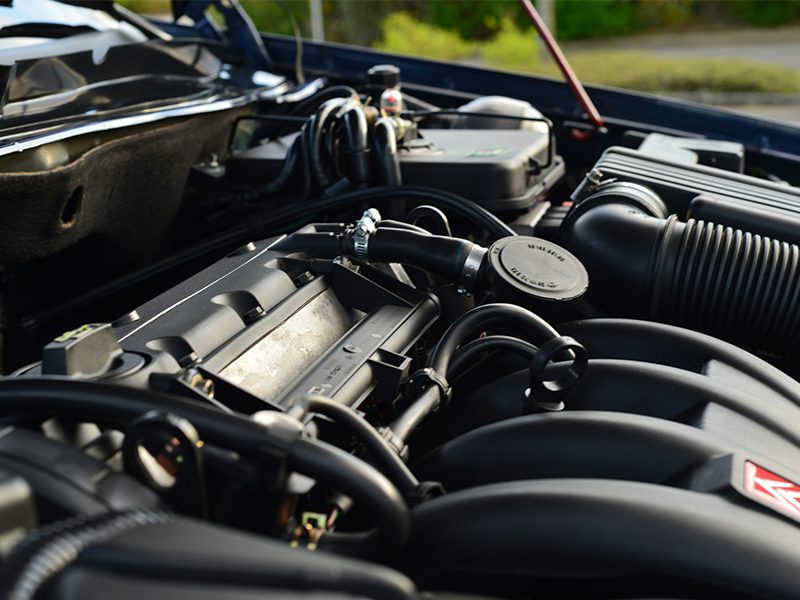Nothing ruins a summer drive faster than vapor lock – one minute you’re cruising, and the next, your engine sputters to a halt. When it happens, sputtering is just the beginning—stalling, stumbling, or complete failure can often follow soon.
Though older classic cars with carbureted motors are the usual culprits, modern vehicles sadly aren’t immune. Recognizing vapor lock symptoms early can save you from breakdowns and costly fixes, so stick around and stay ahead of the problem!
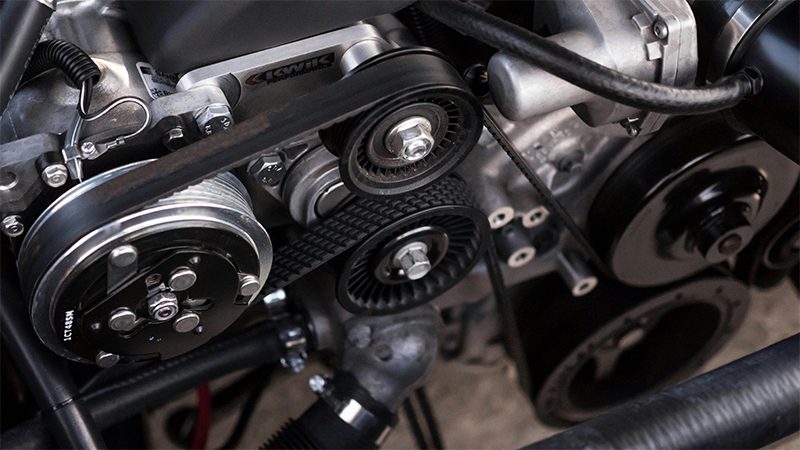
What is Vapor Lock and How Does It Occur?
Vapor lock happens when fuel in the lines overheats and evaporates. As a result, the fuel pump ends up sending fumes instead of liquid gasoline to the injectors, starving the motor and causing various performance issues.
This also leads to hard starts, rough rev performance, or sometimes even complete failure. As previously stated, while commonly associated with carbureted powertrains, fuel-injected systems can also experience fuel boil lock under extreme conditions.
These are the main causes to look out for:
- Ethanol-Based Mixtures – Ethanol evaporates at a lower temperature than pure gasoline, making it more prone to vaporization in hot weather or high temperatures.
- High Ambient Temperatures – Excess motor compartment warmth, especially during the summer, raises overall fueling system temperatures, causing to boil before it reaches the motor.
- Thermal Buildup Soak After Shutdown – When a hot motor is switched off, radiated engine warmth continues to build up in the fuel lines, causing any gasoline that’s left to boil and vaporize.
- Old or Poorly Insulated Lines – Aged or uninsulated fuel lines absorb more engine bay heat as insulation wears out, making gasoline boil and vaporize much more quickly.
- Weak or Failing Fuel Pump – If a weak or aging pump struggles to maintain pressure, gasoline may vaporize instead of staying liquid, as delayed delivery gives it more time to heat up.
- Restricted or Clogged Filters – If a filter isn’t replaced in due time, it can cause blockages that slow the flow to the motor. The longer gasoline lingers, the higher the chance of it boiling away.
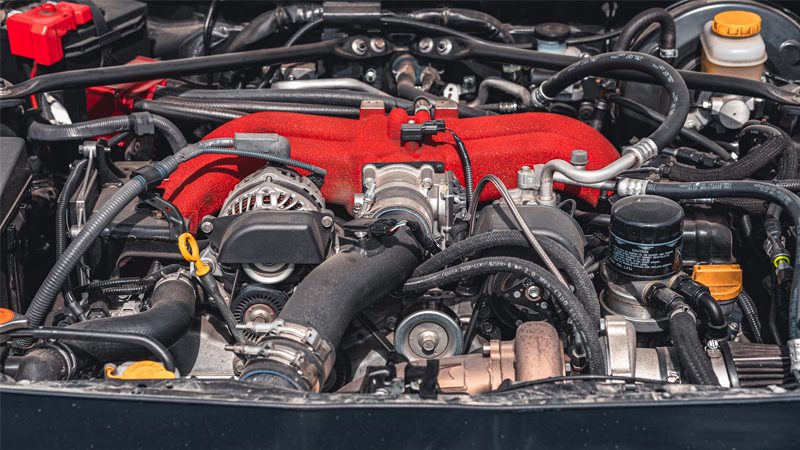
What Causes Vapor Lock in Fuel Systems?
High temperatures, especially during summer, drastically increase the risk of car hot shutdown by causing fuel to vaporize before reaching the combustion gas chamber. If you pair high temps with high altitude, your chances of fuel system vaporization increase exponentially.
Moreover, the intense fire from the engine cylinders and crankcase radiates toward the fuel injector lines, further raising fuel-injected engine temperatures and thus worsening the problem.
Mixture volatility also plays a big role since fuels with a high Reid vapor pressure evaporate more easily. Poor engine cooling and a general lack of proper maintenance can worsen the issue.
All these factors reduce engine efficiency, slow gas flow, and increase the overall high heat the supply system must endure before it reaches the chamber.
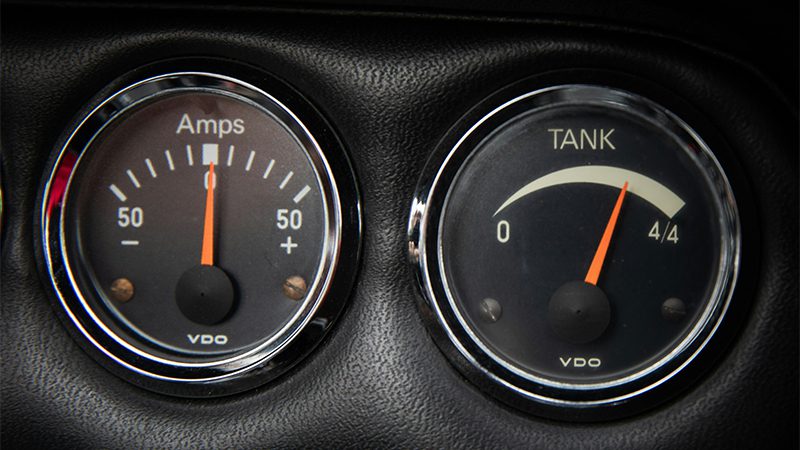
Symptoms of Vapor Lock Every Driver Should Know
1. Engine Stalling
The most common vapor lock symptom is an engine suddenly shutting off because fuel turns into vapor, preventing combustion.
Unlike a clogged fuel filter, this usually happens in hot weather and may resolve after cooling down. Therefore, to properly diagnose the symptoms, always pay attention to the connection between motor temperature and stalling.
2. Difficulty Starting
After being turned off at temperature, the motor may struggle to restart as vaporization stops proper gas delivery.
This is common since gas trapped within the fuel line has nowhere to go, and cooling is less effective when the engine isn’t running. Once again, if cooling helps, it’s likely a car vapor lock, not a battery or ignition issue.
3. Rough Idle
While idling, your car’s cooling system isn’t all that effective. This can cause the motor to run unevenly or shake at idle as vapor disrupts consistent flow.
Unlike sensor issues, fuel boiling point symptoms tend to worsen in high temperatures. This issue is particularly relevant to stop-and-go traffic.
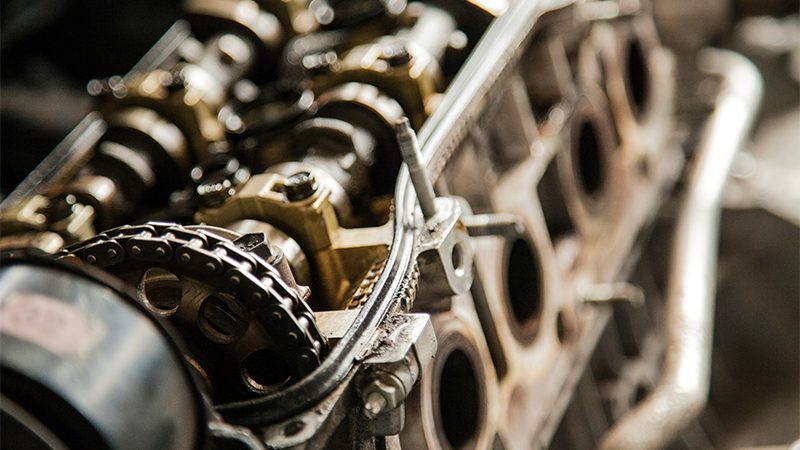
4. Intermittent Performance Issues
The car hesitates or loses power unpredictably due to vapor buildup in the fuel system, unlike ignition issues, which occur regardless of ambient or engine temperature.
If your car is older and its lines lack proper insulation, the issue will likely worsen over time, making it easier to diagnose.
A noticeable drop in engine performance, especially under load, tends to occur as vapor lock in the fuel delivery system restricts consistent fuel delivery. Unlike a faulty throttle position sensor, this issue mainly occurs in extreme heat, with ethanol fuel, or with older cars.
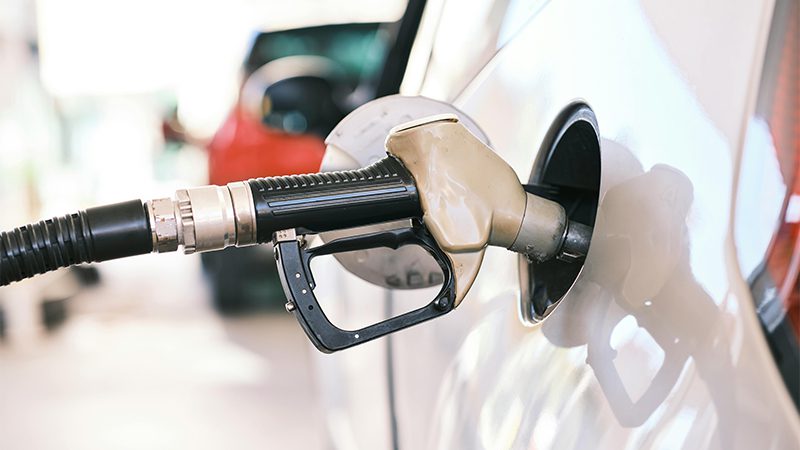
How to Diagnose Vapor Lock | A Step-by-Step Guide
Step 1: Install a Clear Fuel Hose
If your car has a carbureted engine, this is going to be the first thing you’ll do. Be sure to attach a clear hose from the pump to the carburetor inlet to visually monitor the fuel delivery.
If your car does not have a carbureted vehicles’ engine, you can attach the clear fuel line between the fuel rail and return line or before the fuel vapor pressure regulator.
Once you successfully install the clear fuel hose, make sure that it’s fixed in place so no fuel can escape the system and no air can enter. If air enters the system, this method will not be able to tell the true story as this can also cause air bubbles.
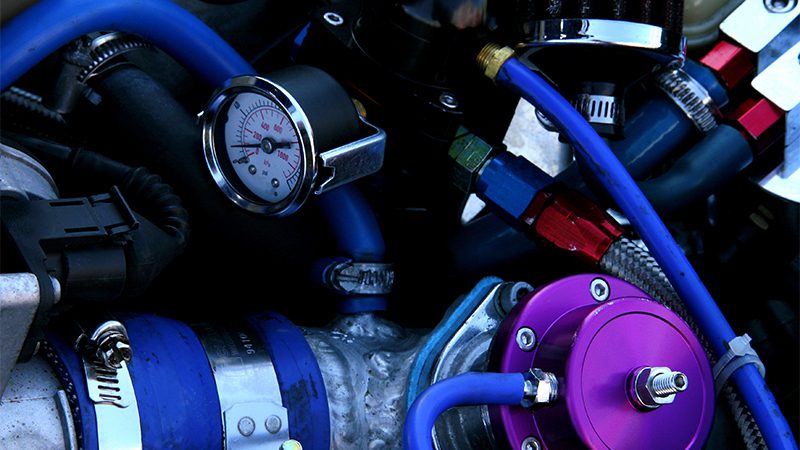
Step 2: Heat up the Engine
To accurately replicate real driving conditions, take the car for a drive until it reaches normal operating temperature. If you experience vapor lock, test the car under the same conditions where symptoms occurred.
For example, if the issue appeared while driving during the day, test it again during similar daytime temperatures to replicate the conditions as closely as possible.
Step 3: Check for Proper Fuel Flow and Confirm the Symptoms
Stop the car and let it idle. Check the clear fuel hose—it should stay full of fuel with no air bubbles. If fuel flows smoothly, fuel boil likely isn’t the issue.
If you see air pockets, but you are sure there are no air leaks, your car may have vapor lock problems. Have someone rev the motor—this increases fuel demand, which can worsen air pockets, further confirming the issue.
Listen for motor hesitation, surges, or shutdowns. Let the car cool down and repeat the test with a cold unit—if symptoms vanish when cold but return with heat, vapor lock is the likely cause.
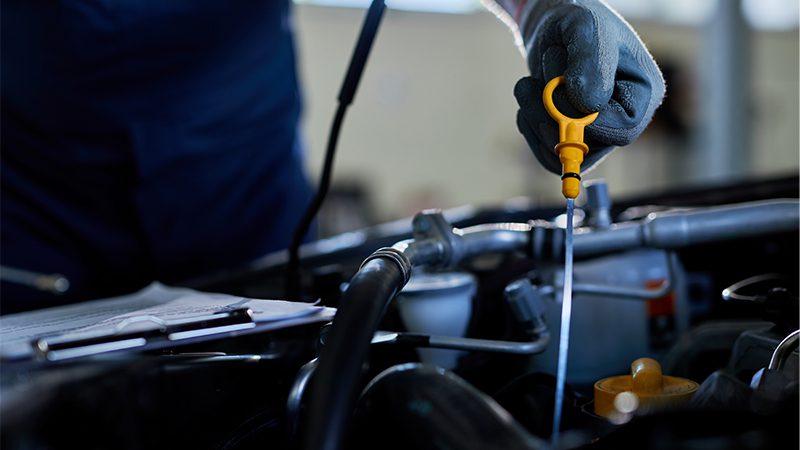
What Are the Best Ways to Fix Vapor Lock?
Vapor lock happens in the fuel distribution system and can cause stalling, power loss, and starting issues, especially in high temperatures.
As fuel vaporizes before reaching the motor, it starves the system of liquid fuel, leading to rough idling, misfires, and hesitation. In severe cases, the motor may shut off completely and refuse while hot.
Repeated vapor lock episodes strain the fuel pump and injectors, causing premature wear and performance issues. If fuel starvation leads to backfiring, or overheated gasoline lines start leaking, the combination of heat and vapors could even become a fire hazard.
To fix carbureted engine vapor lock, install an electric fuel pump for consistent pressure or add a plastic carb spacer to reduce heat transfer. Another solution is an Aeromotive in-reservoir pump with a return system, which circulates excess fuel back to the fuel tank, keeping it cool.
Installing an inline electric pump in tandem with the mechanical pump helps maintain fuel pressure, further reducing vaporization risk.
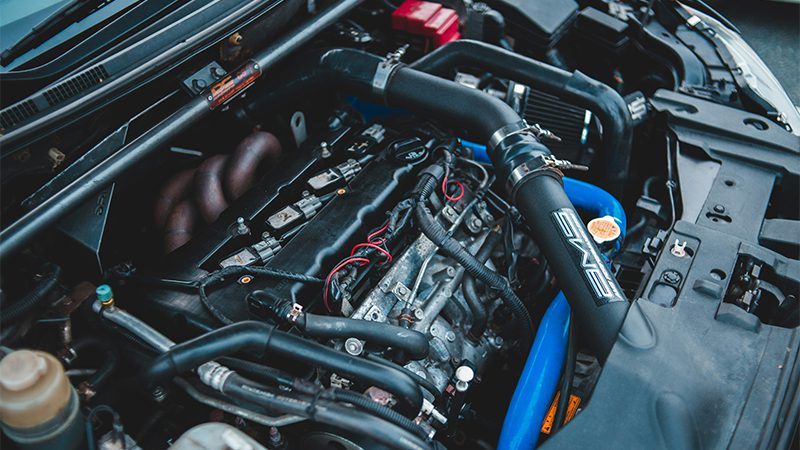
How Can I Prevent Vapor Lock?
To prevent vapor lock, you should use black nylon braided fuel hoses and route them away from common heat sources. Another method is to install a fuel filter to ensure smooth gas flow which reduces the time fuel travels to the carburetor of the engine.
A better filter keeps debris out, ensuring smooth fuel flow, while ethanol-free fuel blends reduce evaporation risks. It would also be a good idea to check and replace the gas cap to prevent air leaks.
Lastly, installing a fuel return system helps circulate and cool fuel, and insulating fuel lines can further protect against excessive temperature buildup, especially with classic cars.

Can a Faulty Fuel Pump Lead to Vapor Lock Issues?
The fuel pump prevents vapor lock by maintaining pressure in the fueling system. Older mechanical pumping solutions are more prone to vapor lock as they sit on hot carburetor components and create more negative pressure.
Benefits of Electric Fuel Pumps
Installing an electric fuel pump is one of the best ways to prevent engine vapor lock, and here is why:
| No. | Benefits | Description |
|---|---|---|
| 1 | Prevents Vapor Lock | Higher fuel pressure reduces vapor lock |
| 2 | Maintains Consistent Fuel Pressure | Consistent pressure prevents air pockets from forming |
| 3 | Less Temperature Exposure | Located in the fuel tank, not on the carburetor |
| 4 | Reliable Fuel Supply | Not as inherently inconsistent as a mechanical fuel pump |
| 5 | Improved Cold Starts | Instant fuel pressure reduces cranking times |
| 6 | Better Performance Under Load | Handles extreme conditions better, preventing hesitation or stalling |
| 7 | Better Compatibility | Works with modern fuel-injected systems and return-style fueling carburetor systems |
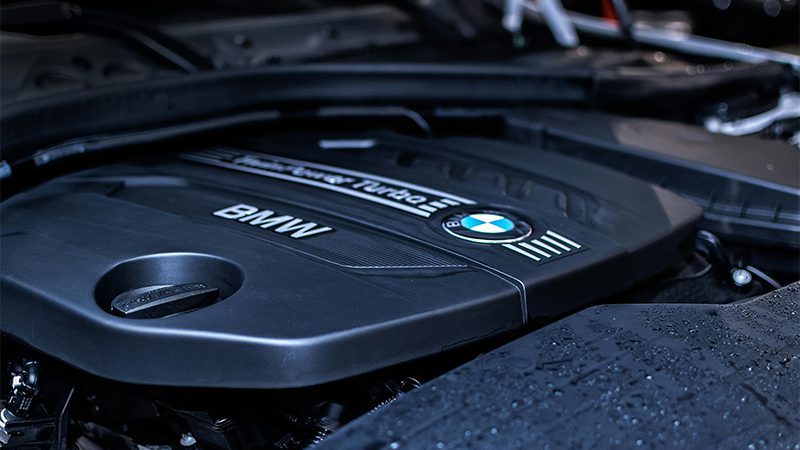
FAQs
1. How to stop engine vapor lock?
To stop vapor lock:
- Allow the engine to cool down completely.
- Open the fuel cap slowly to release pressure (if safe).
- Insulate fuel lines or reroute them away from heat sources.
- Use electric fuel pumps to maintain pressure and avoid boiling.
Preventive measures like proper fuel system design and heat shielding are the best long-term fixes.
2. What is the main cause of vapor lock?
Vapor lock occurs when fuel turns to vapor before reaching the engine, disrupting fuel flow. This typically happens due to:
- High engine or ambient temperatures
- Poorly routed fuel lines near heat sources
- Low fuel pressure, especially in carbureted systems
It’s most common in older vehicles or under-hood conditions with poor ventilation.
3. How to tell if your engine is vapor locked?
Signs of vapor lock include:
- Sudden engine stalling, especially after extended idling or driving in heat
- Difficulty restarting the engine while hot
- Sputtering or hesitation under load
If the engine starts fine when cooled down, vapor lock is a likely cause.
4. Can vapor lock occur while driving?
Yes, vapor lock can occur while driving, especially during:
- Stop-and-go traffic on hot days
- Climbing hills or towing loads
- Long idling periods in heat
Fuel delivery is disrupted, causing engine hesitation, stalling, or power loss.
5. Does premium gas help with vapor lock?
In some cases, premium fuel may help reduce vapor lock because it often has a higher boiling point and better stability. However, the effect is limited. Addressing heat exposure and fuel system design is more effective for long-term prevention.
Closing Thoughts on Engine Vapor Lock
Understanding all of the vapor lock causes and solutions helps diagnose and fix the issue efficiently. Upgrading the fuel system, insulating components, and using ethanol-free fuel can reduce the risk. High-end parts also play a key role—this is where we come in.
Nanjing Woda Auto Technology Co., Ltd, with 25 years of experience in the automotive parts industry, provides high-quality engine, ignition, and fuel system components to help prevent and resolve vapor lock issues. With over 100,000 products exported worldwide, and tons of expert advice blogs, we are committed to delivering genuine quality, competitive pricing, and reliable after-sales support to meet your automotive needs.

